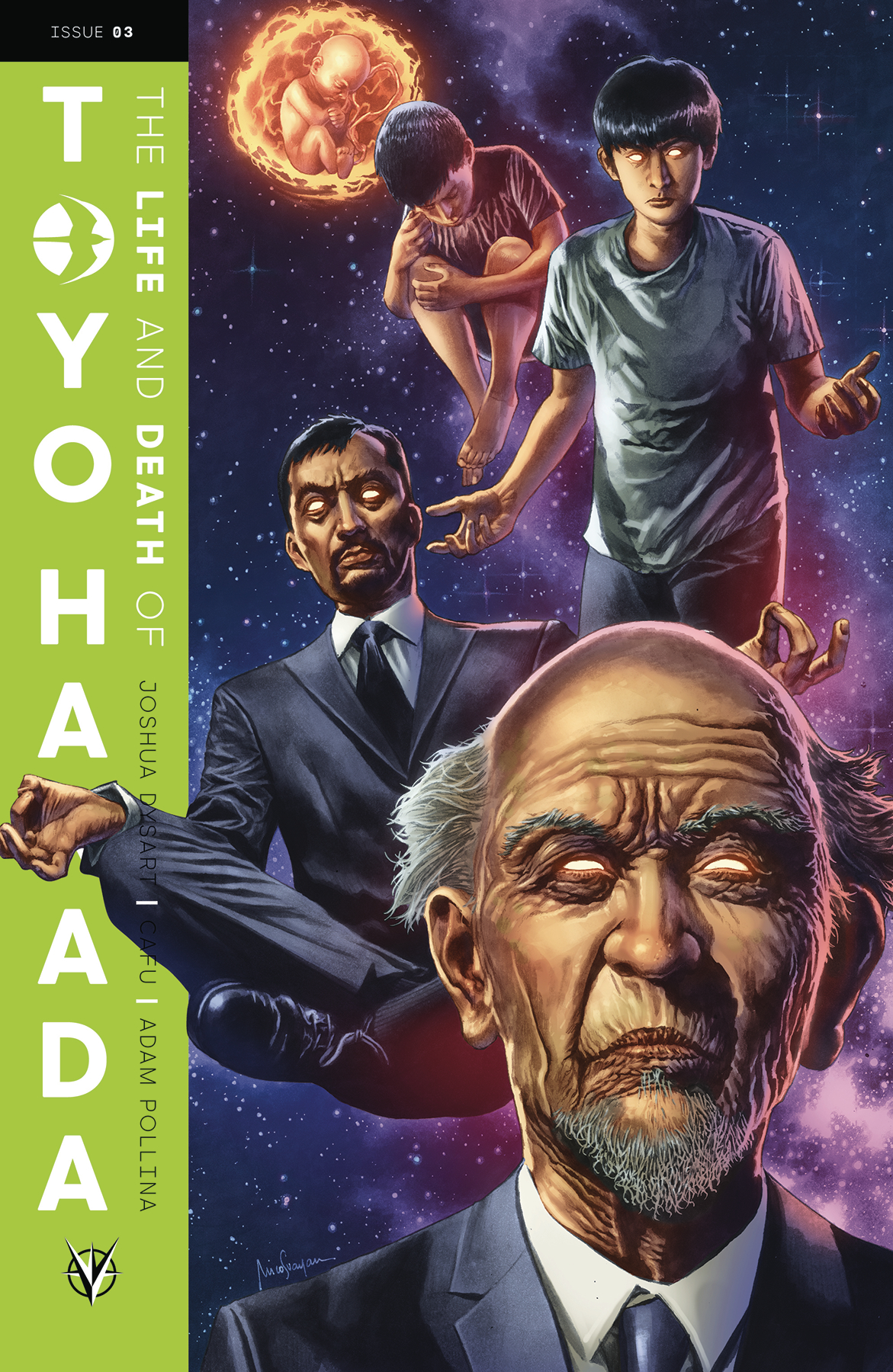Writer: Joshua Dysart
Artists: Cafu + Adam Pollina
Rating: 8 of 8
The Life and Death of Toyo Harada #3

Some of the best parts of a story are the quieter moments. They act not only as a break from the action, but also as a chance to get to know our characters better. We get a few of those throughout the issue, but a definite highlight was the one between a younger Harada and a dying Albert Einstein. Only Einstein could see him and the conversation was mostly a mental one.
It reminded me of a conversation Dr Strange would have on the Astral Plane, where Strange's spirit could leave and move about freely. Einstein believed Harada was the Ferryman, bringing him onward from death, though he actually went there seeking help from the scientist in understanding who he was.
Through the art, different feelings are evoked each time we see this conversation. When it's just beginning, Einstein's room is filled with pink and a lots of flowers, giving a feeling of spring, despite his oncoming death. After that, we see the duo high above doctors attending to the scientist. The perspective is well done, but I wouldn't look at it too long due to the feeling it gives.

Behind them, we see a variety of images from Einstein's life, which empty as they move on. Later, we see them when they were younger, going over their pasts. This eventually twists into something horrific, especially for Einstein. In the present, Toyo and his team have to deal with enemies from various countries, but the main threat is the inhuman scientist, Angela. She's aboard their vessel, which seems odd if she's a threat, though she does have a lab there.
Despite his suspicions about her and Ingrid's urging, Harada's unwilling to kill her. He says it's because 'there hasn't been a scientist with more to give' in human history, but it makes me wonder why he doesn't implement more preventative measures to stop her. That could be exactly what he's doing with robot Mech Major and Gravedog, who might not be fully human or machine.
I'm left curious how they're going to succeed next issue, especially how things end here. Overall, a very good issue and I have no significant issues with it. It flowed well and I was able to understand most of it. There were amazing visuals throughout and a great contrast between the past and the present in art alone. Neither overly complicated or simplistic. Definitely worth a read.



No comments:
Post a Comment